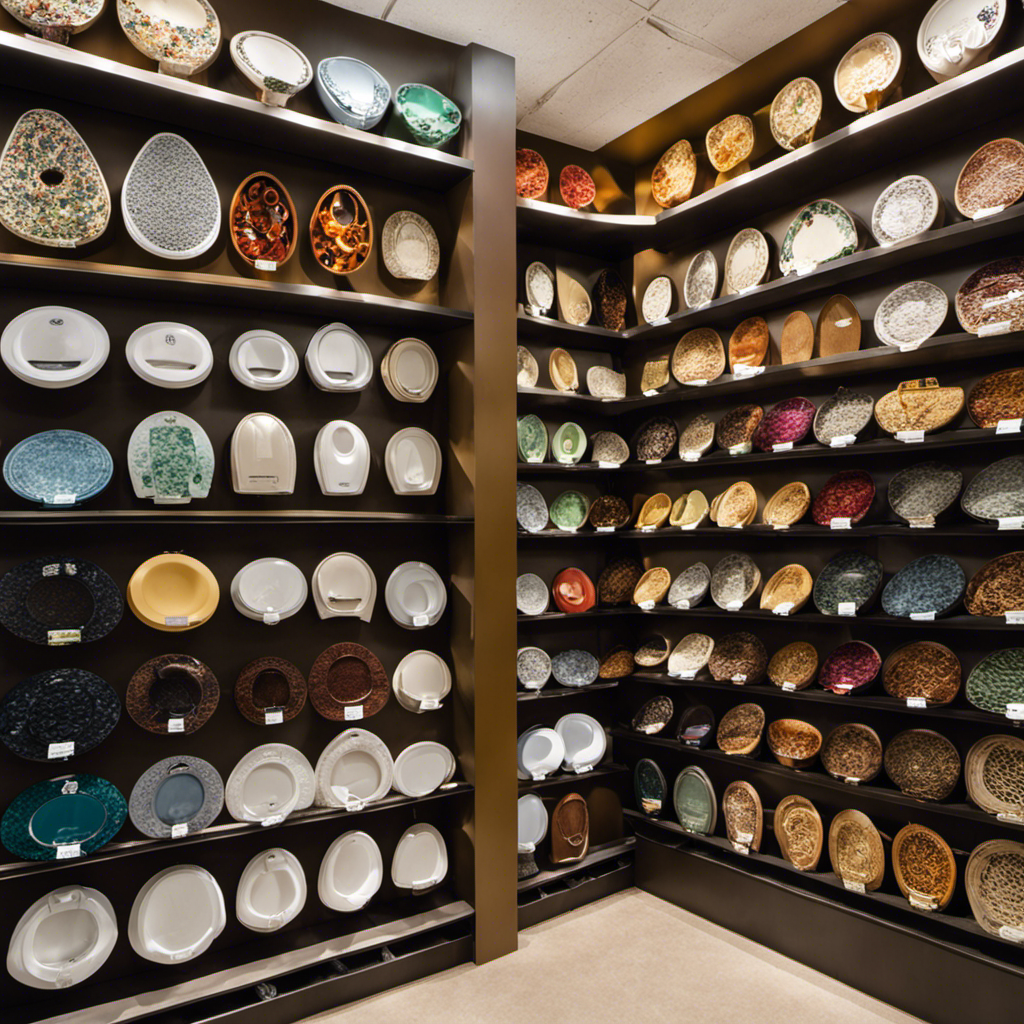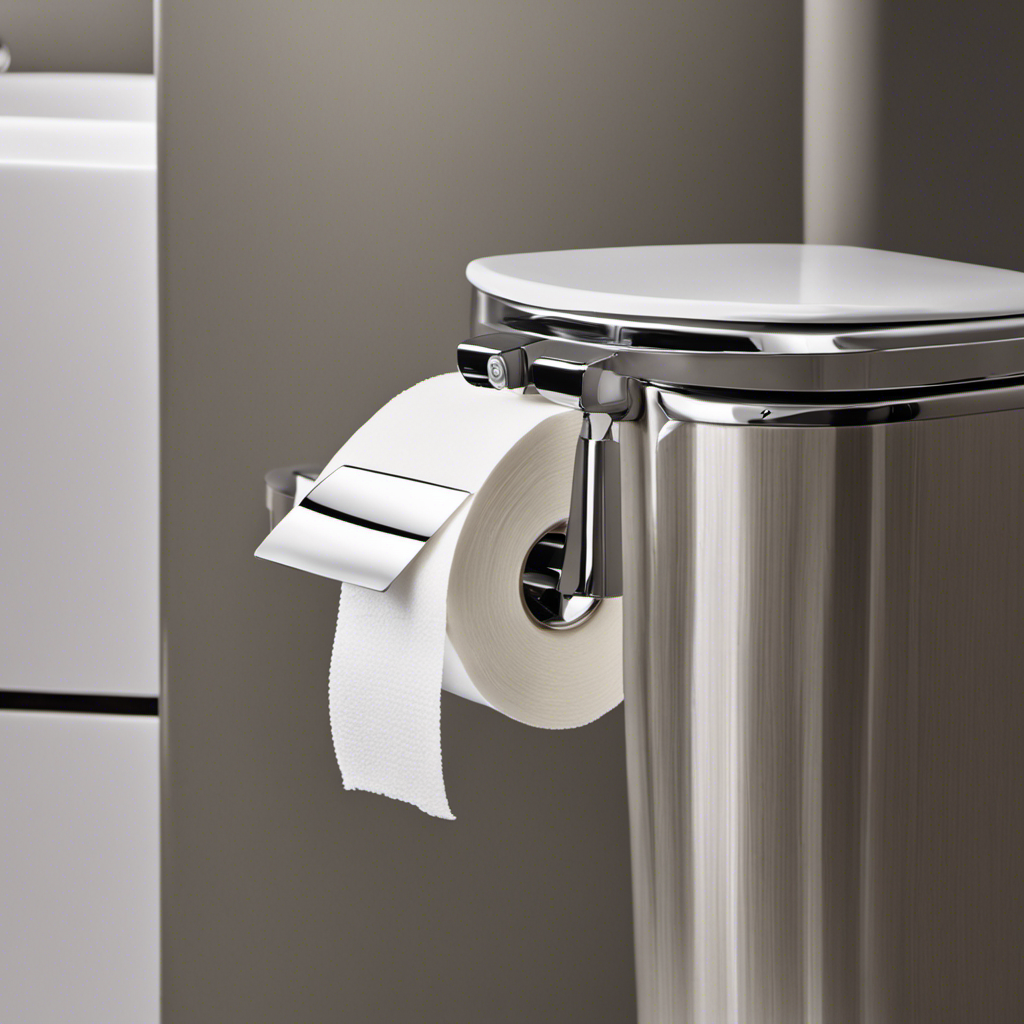Picture this: you’re in a remote cabin, far away from city life, surrounded by nature’s beauty. But there’s a problem – no plumbing.
That’s where a compost toilet comes in. It’s an innovative solution that turns waste into valuable compost.
In this article, I’ll guide you through the science behind composting toilets, the components of a system, installation steps, waste management, and the benefits of using this eco-friendly alternative.
Get ready to dive into the world of compost toilets and discover how they work.
Key Takeaways
- Composting toilets use natural processes, such as the activity of microorganisms, to break down waste into compost.
- Proper ventilation systems in composting toilets ensure adequate oxygen supply for aerobic decomposition.
- Microbial activity in the composting chamber heats up the waste, accelerating the decomposition process.
- Compost toilets save water, reduce environmental impact, and eliminate the need for sewage systems, offering an eco-friendly alternative.
The Science Behind Composting Toilets
Composting toilets use natural processes to break down waste into nutrient-rich compost. The composting process in these toilets is facilitated by microbial activity. When waste is deposited into the toilet, it enters a chamber where the composting magic happens.
Microorganisms, such as bacteria and fungi, break down the waste through a process called decomposition. This decomposition process is aerobic, meaning it requires oxygen. To ensure adequate oxygen supply, composting toilets are designed with ventilation systems that allow air to circulate.
The microbial activity in the composting chamber heats up the waste, accelerating the decomposition process. As the waste breaks down, it transforms into compost, a dark, crumbly material rich in nutrients.
This nutrient-rich compost can then be used as fertilizer for plants and gardens, closing the loop on waste disposal and promoting sustainability.
Understanding the Components of a Compost Toilet System
Understanding the various components is key to properly maintaining and utilizing a compost toilet system. A compost toilet consists of several essential parts that work together to ensure effective waste decomposition and odor control. These components include:
-
Collection Chamber: This is where the human waste is deposited and stored for composting.
-
Ventilation System: A well-designed ventilation system is crucial for compost toilet maintenance. It helps control odors by promoting airflow and preventing the buildup of moisture.
-
Composting Chamber: The composting chamber is where the waste is transformed into compost through the activity of microorganisms. It should be equipped with a mixing mechanism to aid decomposition.
-
Leachate Collection System: Compost toilets generate liquid waste called leachate. A leachate collection system collects and diverts this liquid for proper disposal or treatment.
Understanding how these components work together will ensure effective compost toilet maintenance and odor control.
Now, let’s dive into a step-by-step guide on how to install a compost toilet.
Step-by-Step Guide to Installing a Compost Toilet
To successfully install a compost toilet, you’ll need to gather the necessary tools and materials.
First, you’ll need a compost toilet system, which typically includes a toilet bowl, a composting chamber, and a ventilation system. Additionally, you’ll need a few basic tools such as a drill, screwdriver, and measuring tape.
Start by assembling the toilet bowl according to the manufacturer’s instructions, ensuring a secure fit.
Next, install the composting chamber, making sure it is properly sealed and connected to the toilet bowl.
Finally, set up the ventilation system to ensure proper airflow and odor control. Remember to follow all safety guidelines and local regulations when installing your compost toilet.
With the installation complete, you can now move on to maintaining and managing waste in your compost toilet.
Maintaining and Managing Waste in a Compost Toilet
When it comes to managing waste in your compost toilet, you’ll need to regularly add a mixture of sawdust and organic material to help with decomposition. This not only helps break down the waste, but also helps manage odors that may arise during the composting process.
Here are a few key steps to effectively manage waste in your compost toilet:
-
Maintain a proper carbon-nitrogen balance: The sawdust acts as a carbon source, while the organic material provides nitrogen. This balance is crucial for the composting process and helps prevent odors.
-
Layer the waste: Alternate layers of waste with layers of sawdust and organic material. This promotes decomposition and helps keep the composting process odor-free.
-
Regularly mix the contents: Stir the contents of your compost toilet regularly to ensure proper aeration and distribution of moisture. This helps speed up the decomposition process and reduces odors.
-
Keep it dry: Moisture control is essential to managing odors in your compost toilet. Monitor the moisture levels and add additional sawdust if needed to maintain a dry environment.
Benefits and Considerations of Using a Compost Toilet
By using a compost toilet, you can save water and reduce your environmental impact. Compost toilets are an eco-friendly alternative to traditional flush toilets. They work by separating solid waste from liquids and using natural processes to break down and compost the waste. This not only reduces water usage but also eliminates the need for sewage systems and reduces pollution.
Compost toilets are regulated by local health departments, and guidelines vary by region. Some areas require permits or inspections for installation and use. When considering a compost toilet, it’s important to research and comply with the regulations in your area.
Additionally, there are alternative options available such as portable compost toilets or self-contained units. These alternatives offer flexibility and convenience for those who are unable to install a permanent compost toilet.
Frequently Asked Questions
Are Compost Toilets Legal in All Areas?
Composting toilets may not be legal in all areas due to composting regulations and potential environmental impact. However, it is important to research local laws and regulations to determine if they are allowed in your specific location.
Can I Use a Compost Toilet in a Residential Home?
Using a compost toilet in a residential home has both pros and cons. It requires careful installation considerations. While it may seem unconventional, it can be an environmentally friendly and cost-effective option.
How Does a Compost Toilet Handle Odor Control?
When it comes to compost toilet odor control, proper maintenance is key. Regularly adding a carbon-rich material, such as sawdust, helps absorb and neutralize odors. This, combined with proper ventilation, ensures a pleasant and odor-free experience.
How Often Do You Need to Empty a Compost Toilet?
Emptying frequency of a compost toilet depends on factors like usage and design. Typically, it needs emptying every few months to a year. The composting process breaks down waste, converting it into nutrient-rich compost.
Can I Use a Compost Toilet During the Winter Months?
Yes, you can use a compost toilet during the winter months. However, it requires proper maintenance to ensure the composting process continues. Regularly add carbon-rich materials and monitor moisture levels to prevent freezing and promote decomposition.
Conclusion
In conclusion, compost toilets are an innovative and sustainable solution for managing human waste. By harnessing the power of natural decomposition, these toilets convert waste into valuable compost that can be used to enrich soil.
The science behind composting toilets is fascinating, as it involves the breakdown of organic matter by bacteria and fungi. Installing and maintaining a compost toilet system requires careful consideration of its components and proper waste management practices.
While there are many benefits to using compost toilets, it is important to investigate the theory that they may help reduce water pollution and promote environmental conservation.










